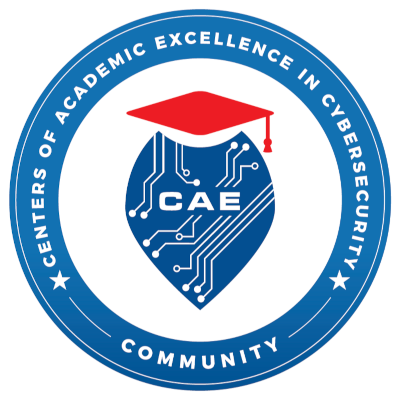The Center for Education and Research in Information Assurance and Security (CERIAS), a cross-cutting institute at Purdue University, is the world’s foremost interdisciplinary academic center for cyber and cyber-physical systems; more than a hundred researchers addressing issues of security, privacy, resiliency, trusted electronics, autonomy and explainable artificial intelligence. CERIAS brings together world-class faculty, students and industry partners to design, build and maintain trusted cyber/cyber-physical systems. CERIAS serves as an unbiased resource to the worldwide community.
The Research conducted through CERIAS includes faculty from six different colleges and 20+ departments across campus. The six areas below summarize the research focus areas for the faculty involved with the center:
- Assured Identity and Privacy
- End System Security
- Human Centric Security
- Network Security
- Policy, Law and Management
- Prevention, Detection and Response
Policy, Law and Management
This area includes tools and methods for understanding the context of security, and how to best allocate resources for protection of assets. This includes research into risk assessment and mitigation methodologies, policy development, the role of law and social pressure on security, economic aspects of security, cross-cultural issues governing security, cyberethics, simulation and modeling of security, and policy languages and proofs.
Departments: Communication, Computer Science, Education, ITaP, Management, Nuclear Engineering, Philosophy, Sociology, Computer & Information Technology
Human Centric Security
How does IT change our interactions, and how can more trustworthy IT change them further? This includes studies of on-line trust, ecommerce (business-to-business and business-to-consumer), digital government services, e-conferencing, on-line personae and anonymity, online news, on-line research and the ephemeral nature of information, on-line propaganda, and spam.
Departments: Communication, CERIAS Staff, Computer Science, Hospitality & Tourism Management, Management, Psychology, Computer & Information Technology, Linguistics
End System Security
This area includes tools and methods for building software artifacts, servers, and networks that are resistant to attacks and failures. This includes research into vulnerability assessment and identification, programming languages and tools for secure programming, mobile code and “sandboxes,” proof-carrying systems, trusted embedded systems, resilient server architectures, protection against malicious software, dynamic reconfiguration of systems, hardware architecture design, fault-tolerance, code tamperproofing, and penetration testing. Research into more secure operating systems and database systems falls in this area, as does research into better human-computer interfaces for security (HCI).
Departments: CERIAS staff, Computer & Information Technology, Computer Science, Electrical & Computer Engineering, Industrial Engineering, Linguistics, Psychology
Network Security
Security becomes more complex when participating entities are physically separated from the current location; knowing who and what is communicating from a remote location complicates security decisions. Research in this area includes wireless computing, communication protocol design and verification, agent computation, quality-of-service protection, firewall design and testing, SCADA security, dynamic and protective routing, security for grid computing, and sensor net security.
Departments: CERIAS staff, Communication, Computer & Information Technology, Computer Science, Electrical & Computer Engineering, Industrial Engineering, ITaP
Prevention, Detection and Response
Systems are attacked, and sometimes attacks succeed. This area of our expertise includes intrusion and misuse detection, integrity management issues, audit and logging analysis, sensor and alarm design, strike-back mechanisms, dynamic reconfiguration, honeypots and “jails”, cyberforensics, hacker profiling, deception and psychological operations, information warfare, cyberterrorism, criminal law and computer crime.
Departments: CERIAS staff, Communication, Computer & Information Technology, Computer Science, Electrical & Computer Engineering, ITaP
Assured Identity and Privacy
There is a tension between increased confidence and granularity of authorization provided by better identification of on-line entities, and with the need to protect the privacy rights of individuals and organizations. This area includes research in role-based access control (RBAC), biometrics, pervasive surveillance (“Panoptic Effects”), privacy-protecting transformations of data, privacy-protecting data mining methods, privacy regulation (e.g., HIPAA and COPPA), oblivious multiparty computation, and trusted proxy research.
Departments: Communication, Computer & Information Technology, Computer Science, Electrical & Computer Engineering, Industrial Technology, Sociology, Statistics
About our logo
What it represents

The CERIAS Logo is of a magnifying glass, of the kind often seen in old Sherlock Holmes movies and artist conceptions of scientists at work. In both cases, the magnifying glass makes small features visible, providing important clues to an investigator. This represents our own work in research and the practice of infosec - making new features visible to students, researchers and practitioners. In the field of the magnifying glass, the “IAS” is enlarged. This signifies the Center’s focus on issues of Information Assurance and Security.
Our logo was designed for CERIAS by Michael Tieman of Artists Gallerie. He donated his efforts to Purdue University, and we are grateful for his work.
You can get print-ready versions of the CERIAS logo on the Public Relations Materials page.




